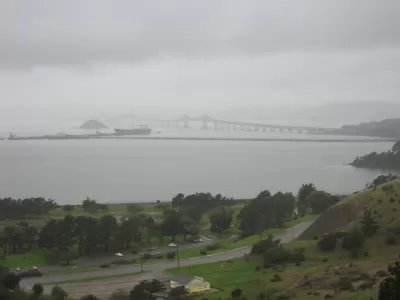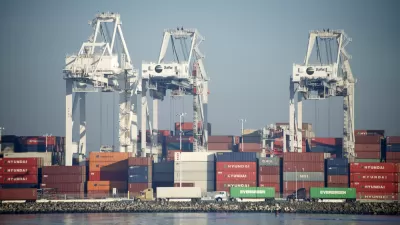Can freight trains and a scenic shoreline park along San Francisco Bay coexist, or are they incompatible uses? The East Bay Regional Park District voted to remove old rail tracks that BNSF Railway wants to reactivate. A local court may decide.

Cabanatuan provides the historical context of the rail line and the city of Richmond.
BNSF Railway’s predecessor, the Atchison, Topeka and Santa Fe Railway, brought Richmond to life in 1900 when it located its western terminus there. The railroad built a large rail yard near what became Point Richmond and a tunnel and tracks to Ferry Point on the shoreline, where passenger trains rolled onto barges to San Francisco and freight trains were taken to other bay ports.
When the park district bought the right of way in 1991 via eminent domain, the railroad was granted an easement to run trains to two industrial sites, both of which are now defunct.
What's not mentioned in any local or regional media coverage of the controversy is the vital role that rail plays in goods movement, not just from an economic but also an air quality perspective as well, even when the trains are being pulled by diesel-powered locomotives.
"[O]ne rail car can haul as much as four tractor-trailer trucks," according to a recent New York Times article (posted here) about a $100 million effort led by the New York City Economic Development Corporation to invest in local freight rail infrastructure so as to reduce truck traffic and emissions.
FULL STORY: Train tussle: Campaign fights plan for ‘wall of railcars’ on Richmond shoreline

Planetizen Federal Action Tracker
A weekly monitor of how Trump’s orders and actions are impacting planners and planning in America.

Maui's Vacation Rental Debate Turns Ugly
Verbal attacks, misinformation campaigns and fistfights plague a high-stakes debate to convert thousands of vacation rentals into long-term housing.

San Francisco Suspends Traffic Calming Amidst Record Deaths
Citing “a challenging fiscal landscape,” the city will cease the program on the heels of 42 traffic deaths, including 24 pedestrians.

Amtrak Rolls Out New Orleans to Alabama “Mardi Gras” Train
The new service will operate morning and evening departures between Mobile and New Orleans.

The Subversive Car-Free Guide to Trump's Great American Road Trip
Car-free ways to access Chicagoland’s best tourist attractions.

San Antonio and Austin are Fusing Into one Massive Megaregion
The region spanning the two central Texas cities is growing fast, posing challenges for local infrastructure and water supplies.
Urban Design for Planners 1: Software Tools
This six-course series explores essential urban design concepts using open source software and equips planners with the tools they need to participate fully in the urban design process.
Planning for Universal Design
Learn the tools for implementing Universal Design in planning regulations.
Heyer Gruel & Associates PA
JM Goldson LLC
Custer County Colorado
City of Camden Redevelopment Agency
City of Astoria
Transportation Research & Education Center (TREC) at Portland State University
Jefferson Parish Government
Camden Redevelopment Agency
City of Claremont





























